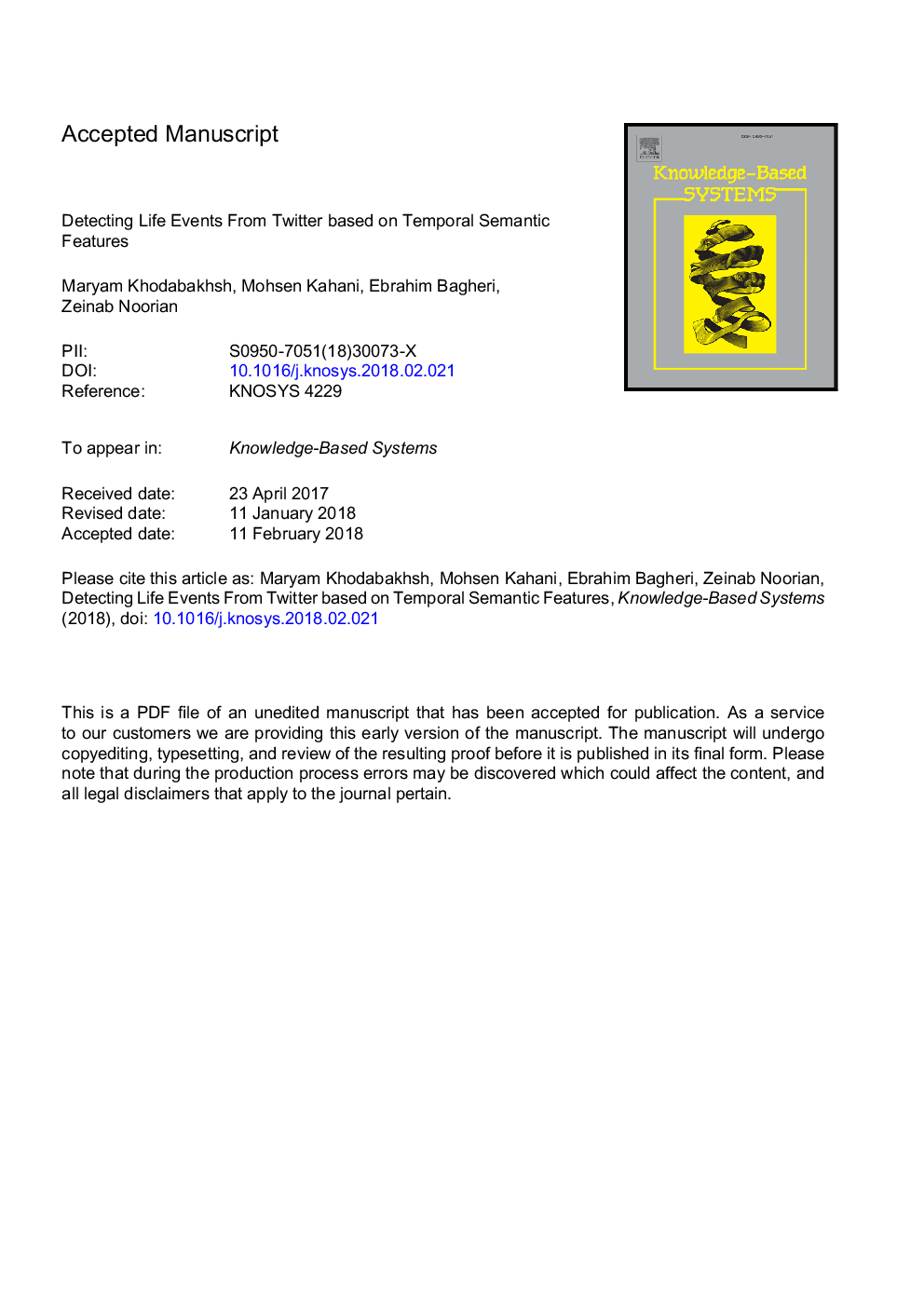| Article ID | Journal | Published Year | Pages | File Type |
|---|---|---|---|---|
| 6861510 | Knowledge-Based Systems | 2018 | 35 Pages |
Abstract
The wide adoption of social networking and microblogging platforms by a large number of users across the globe has provided a rich source of unstructured information for understanding users' behaviors, interests and opinions at both micro and macro levels. An active area in this space is the detection of important real-world events from user-generated social content. The works in this area identify instances of events that impact a large number of users. However, a more nuanced form of an event, known as life event, is also of high importance, which in contrast to real-world events, does not impact a large number of users and is limited to at most a few people. For this reason, life events, such as marriage, travel, and career change, among others, are more difficult to detect for several reasons: i) they are specific to a given user and do not have a wider reaching reflection; ii) they are often not reported directly and need to be inferred from the content posted by individual users; and iii) many users do not report their life events on social platforms, making the problem highly class-imbalanced. In this paper, we propose a semantic approach based on word embedding techniques to model life events. We then use word mover's distance to measure the similarity of a given tweet to different types of life events, which are used as input features for a multi-class classifier. Furthermore, we show that when a sequence of tweets that have appeared before and after a given tweet of interest (temporal stacking) are considered, the performance of the life event detection task improves significantly.
Related Topics
Physical Sciences and Engineering
Computer Science
Artificial Intelligence
Authors
Maryam Khodabakhsh, Mohsen Kahani, Ebrahim Bagheri, Zeinab Noorian,
